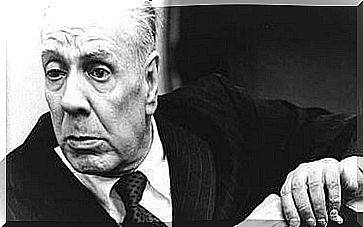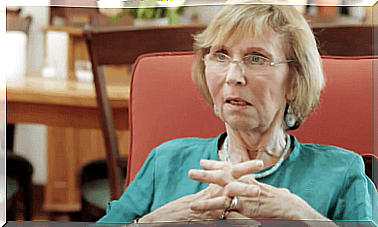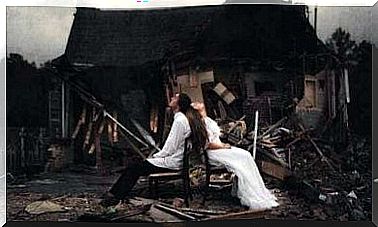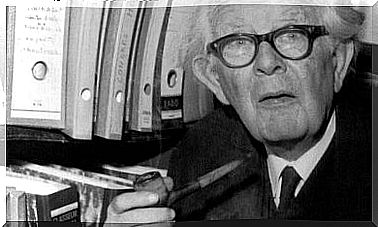The 4 Mourning Tasks Of William Worden
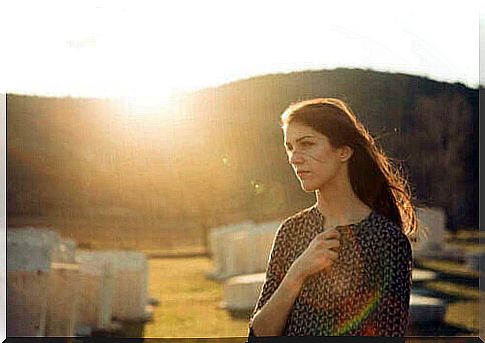
William Worden’s Grieving Tasks configure a new approach to the grieving process. Grieving was conceived as a process divided into stages that a person with a loss had to go through.
The step-by-step design of bereavement gives a passive role to those who suffer from the loss. It also has important consequences for the development of complicated bereavement.
A process of loss is often associated with a period of mourning. Referring to grief as a step-by-step process instead of tasks reduces the person’s involvement. She, in a way, understands that the results of the process are largely the result of the passage of time.
Faced with this idea, William Worden, one of the most recognized specialists in the field of grieving and loss processes, developed a series of stages that individuals go through as active agents in their own process. This promotes healthy bereavement and prevents the chronicization of the bereavement process.

What is loss?
The most positive transitions in life are not necessarily without loss; from a new job that involves losing the previous one to being parents, when you have to leave behind a life with fewer responsibilities. In general, human losses in today’s society can be categorized as follows:
- Losses due to the death of a loved one.
- Decreased functionality, i.e. losses related to physical and / or mental health.
- Losses related to work and, consequently, losses related to one of the roles that one performed in daily life.
- Damage caused by wars and / or natural disasters.
- Theft of precious objects.
- Couple separations, divorces.
- Etc.
What is mourning?
Grieving is an inherent process that involves transitioning to a new stage without the object of loss (in this case, the loss of a loved one). It thus generates biological, emotional and behavioral reactions that facilitate adaptation to the environment and the development of new roles without the deceased.
Several authors have focused on the study of bereavement and its organization in stages or phases. William Worden has developed a series of tasks for people who have to go through this process. This active role of the person is not contrary to the idea that managing grief is a process that takes time.
William Worden’s 4 mourning tasks
William Worden’s grieving tasks range from accepting the reality of loss to adjusting to an environment without the person we have lost. Since grief is a process, not a state, grief tasks involve cognitive processing.
This prepares for the confrontation of certain circumstances and the acceptance of the experience of loss. It is a question of adaptation to a different world and less desired than the previous one.
Accepting the reality of loss, the first of the grieving tasks
When someone dies, even from a natural cause, there is always a feeling of unreality. The first task of mourning would therefore be to accept the death of this person and the fact that we will never be able to see them again, at least in this life.
After a loss, it is common to confuse the deceased with other people on the street or even to have a seat at the table at a family event. Likewise, some people have difficulty with this first task because of thoughts about the reversibility of death.
Pain management after loss
The emotional, physical and behavioral pain during the grieving process is real. If this pain is not recognized, it will manifest in other ways, through abnormal behavior and physical and psychological problems.
Also, not everyone feels pain with the same intensity. It’s even possible to lose someone you’ve been very close to without feeling pain. A person is usually not prepared for the whirlwind of emotions that will invade them during this process. Even though the loss was foreseeable.
However, maintaining the denial of the loss over the long term will make the grieving process continue. People who consciously avoid pain don’t let it go either. Psychological help is therefore vital in cases where this task is stagnant.
Adapting to the environment without being loved
Adapting to life without a loved one involves as many external as internal tasks. Internal adaptations are related to how the death of a loved one affects the person’s self-image, values, beliefs, etc. External adaptations are linked to the tasks of daily living.
When it comes to internal adaptations, people need to adapt the grieving process to suit their personal identity. We are not only referring here to being a widower, being a parent who has lost a child, etc. It is also about how our spiritual beliefs and our value system influence after the loss.
Personal competence after the loss is also important. For example, responsibilities previously assumed by the person who died must now be taken on by the person going through this grieving process.

Finding a connection with the deceased and continuing to live, the last of the tasks of mourning
This is the last of the mourning tasks proposed by William Worden. Here we describe the need to find a lasting bond with the loved one who has left, so that we can at the same time establish other repertoires of behavior adapted to life without this person. Among these links are:
- A special clothing of the person.
- A photograph.
- A family album with photos.
- Video compilation.
- Etc.
It is one of the most difficult tasks. If we don’t realize it, we can get stuck when that person was alive. When the person continues to hold on to the relationship and this prevents them from establishing other relationships in the present, psychological intervention becomes necessary.
Mourning is, in its essence, a request for adaptation. It is therefore normal to see difficulty in connecting to one’s environment. The problem arises, however, when these processes become chronic and do not allow the individual to develop personally, giving rise to certain psychological problems.



